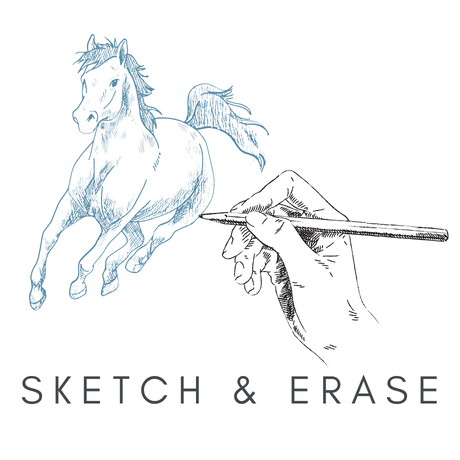Tombow markers are widely used for hand-lettering, coloring books, and journaling, but they can be expensive. Many have wondered if they are paying more money just for the name brand. Staedtler watercolor markers are easily found and are cheaper than Tombow markers, so which one is better?
Tombow markers are more expensive than Steadtler, but are preferred for journaling, hand lettering, and blending. Staedtler watercolor brush pens are cheaper and better for watercolor painting or block lettering. Both markers have a brush and fine tip, but the Tombow brush tip is longer and more flexible, which can be good and bad. These markers really were very evenly matched, so it may just come down to how much quality you need and how much money you are willing to spend.
Staedtler Double-Ended Watercolor Brush Pens
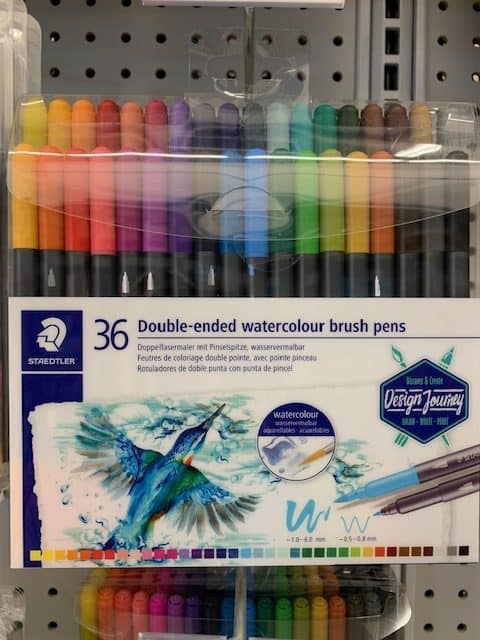
Pros:
- Great for lettering, the tip is stiffer than the Tombow, giving more control for lettering
- Have a brush tip plus a fine tip nib
- Marker is juicy and blends easily
- Cheaper than the Tombow markers (18 pack was $17, vs. $27 for 10 pack of Tombow)
- Sold locally in art stores, I found these on the shelves at Hobby Lobby and Michaels
- Limited colors, these only come in an 18 pack or 36 pack
Cons:
- Not refillable, tips can’t be removed or replaced.
- Brush tip is a smaller, stiffer brush. For those that want their lettering to be more flowy and less structured, it may be a little harder to achieve that with these markers.
Tombow Dual Brush Pens
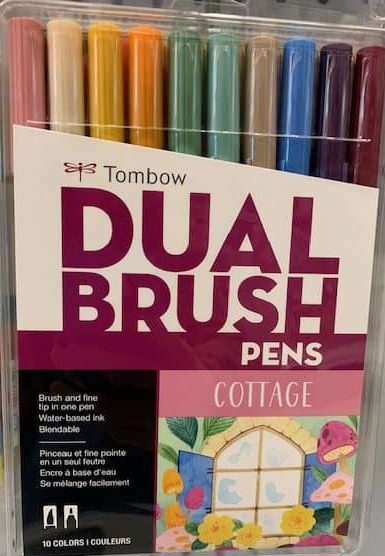
Pros:
- Widely preferred for hand lettering and calligraphy uses
- Brush tip is looser, which can be helpful for calligraphy or lettering
- The markers blend well without needing an extra brush
- They are sold in a wide variety of colors, 108 to choose from
- Found in local art stores, I was able to find these at Hobby Lobby and Michaels
Cons:
- Way more expensive – 10 pack was more expensive than the 18 pack of Staedtler markers
- Marker is longer, not as easy to flip around from using the brush to using the fine tip
- Brush tip is longer and looser, could be hard to control for beginners
- Brush tip is made of nylon, many report that it frays quickly
- Not as good for watercolor painting
Tombow vs. Staedtler – Which is Better for Blending?
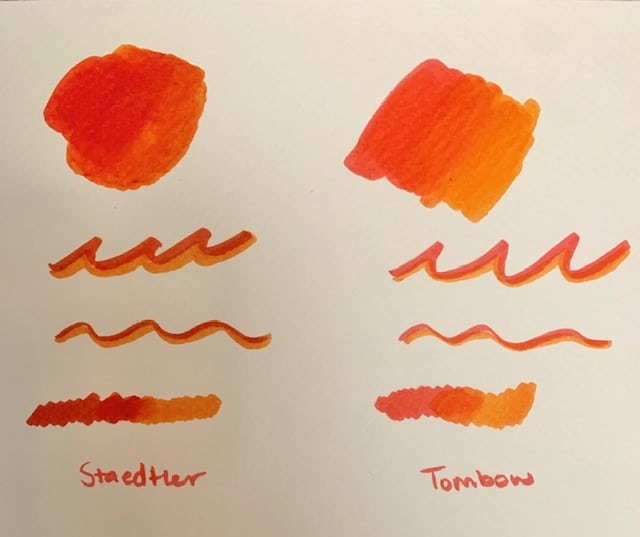
There are several ways to blend water-based markers, and different methods worked better for blending Tombow markers than for the Staedtler markers.
When direct blending just with the markers on watercolor paper, the Tombow markers blended the colors together slightly better without leaving a harsh transition or making the paper pill up. These markers seem to put down more pigment and less water than the Staedtler markers, so the paper wasn’t completely saturated when just using the markers.
That’s why Tombow markers are preferred for journaling and hand-lettering, because they are less likely to saturate and tear through thinner journaling paper.
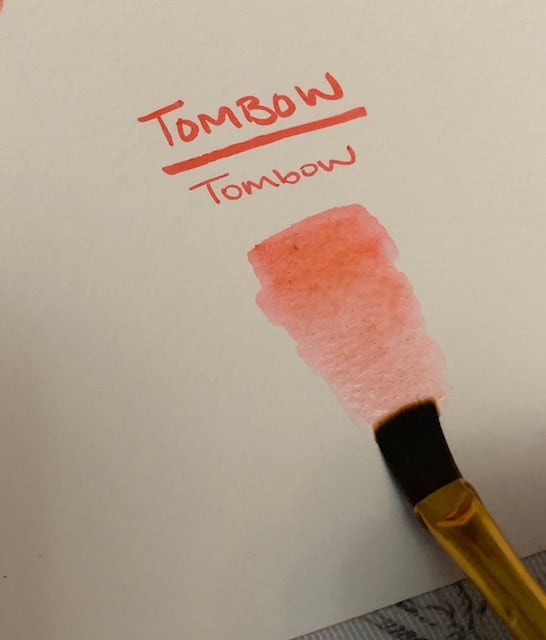
The Staedtler markers did a much better job than the Tombow markers of blending the marker ink with water to create true watercolor paintings. The Staedtler markers tend to saturate the paper faster because the markers themselves are juicer, which makes it a bit trickier to blend two colors on paper just by layering them.
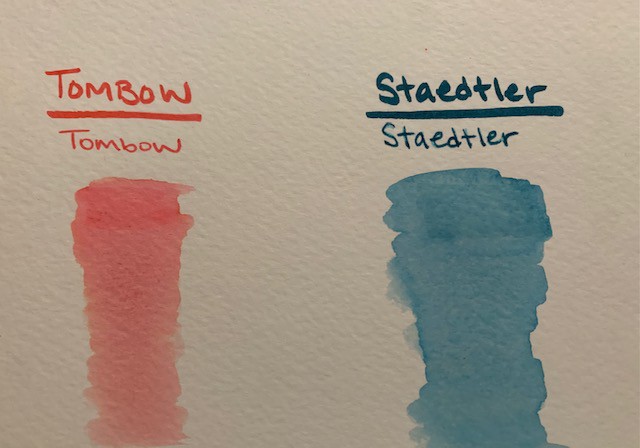
The Staedtlers worked better when I used a clean brush loaded with water to pull and blend the ink that was already put down on the paper. When I tried this same brush blending technique with the Tombow markers, they left lines that dried more quickly on the paper. It required a lot more water to get the ink reactivated and blended with other colors, so it felt like more work with the Tombows.
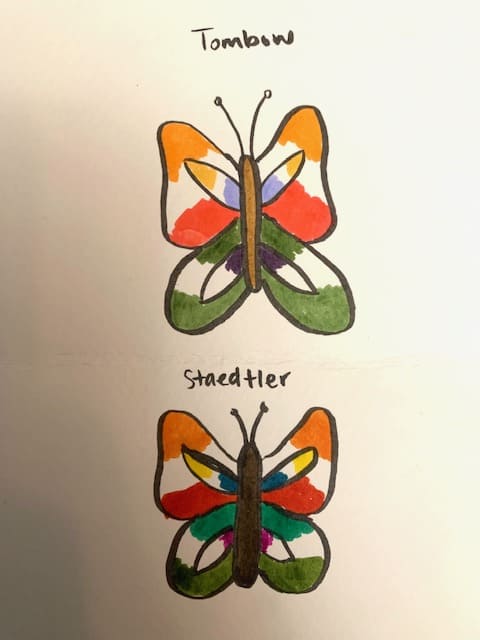
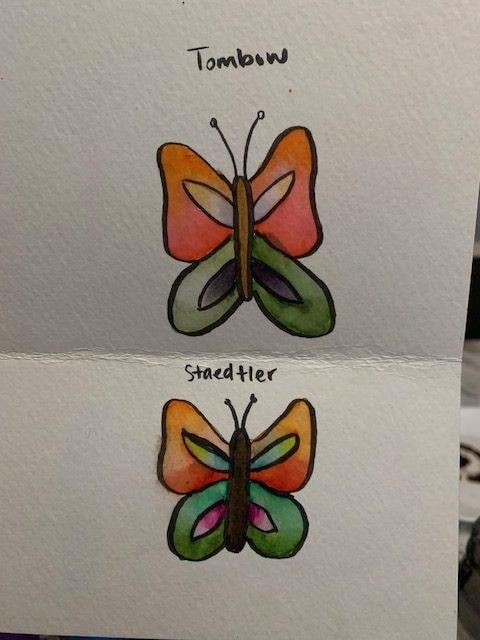
The last way to blend water based markers is called indirect blending. In this method, you would use something slick, (like a piece of plastic, laminated paper, or the plastic case that the markers come in) to layer the colors before putting it on the paper.
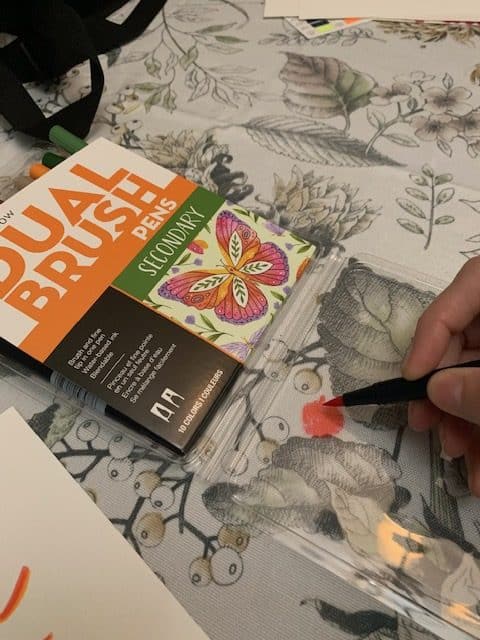
Using this method, I colored on the clear plastic lid of the Tombow case with the red marker, and then colored over that on the plastic lid using the yellow marker. This picked up the red ink onto the yellow marker itself. When I used the yellow marker on the paper, it blended the red that I picked up with the existing yellow in the marker ink.
This creates more of an ombre effect than a true blend, and it’s hard to get the color consistent for a large area if you are painting. I tried this with both the Tombow and the Staedtler brush pens, and both brands did an equally good job of blending colors with this method.
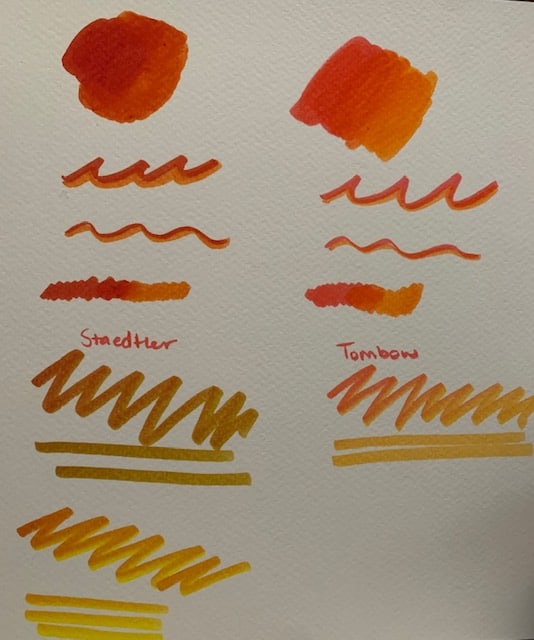
If you want markers that you can use right out of the package and blend with just the markers on thinner paper, Tombow is the way to go, if you can afford them. If you want to use the markers as true watercolors, and you are planning to use a brush and some water to blend your artwork, then Staedtler will likely suit your needs better.
If you are looking for markers that are a bit more budget friendly, I wouldn’t hesitate to recommend the Staedtler markers over the Tombow.
Tombow vs. Staedtler – Which is Better for Hand Lettering?
Tombow markers have a longer brush tip than the Staedtler markers. This can be great for experienced calligraphers or for someone looking for more control over how flowy their brush is. However, for beginners, it’s more recommended to have a smaller brush tip, like the one in the Staedtler brush pens.
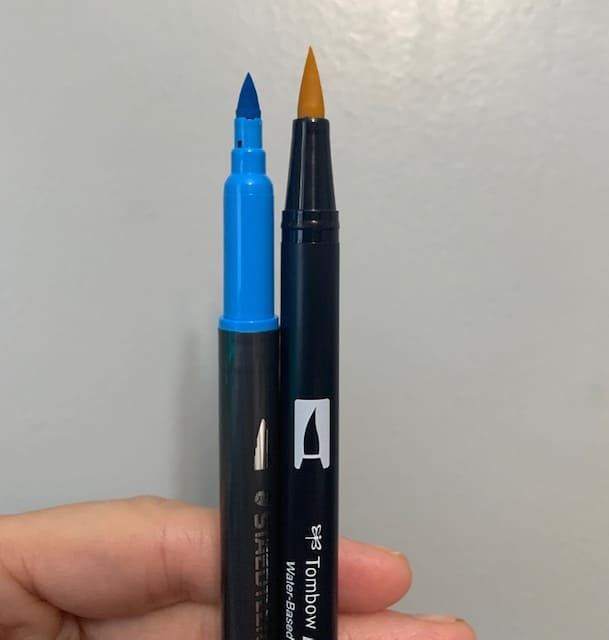
The Staedtler brush tip is a little more stiff, so it doesn’t flop all around when you are trying to control the transition from an up stoke to a down stroke. It’s still easy to use, and it still has enough give that you can make those really thin lines and the fatter lines as well.
I preferred the Staedtler pen when I was trying to just create printed letters, like in a journal entry, and the Tombow pen when I was trying to get really creative and make flowy cursive letters that really stood out.
The Staedtler fine tip has a pointed end, making it easy to get very thin lines. The Tombow fine tip has a rounded point, which works well but doesn’t allow the same amount of control over those really thin lines.
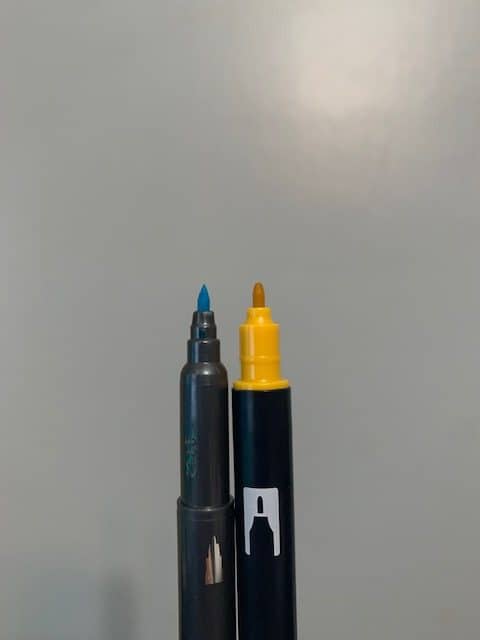
Are Tombow Brush Pens Worth the Higher Price?
Tombow Brush Pens have fantastic quality, and they are widely preferred for professional art. However, Staedtler watercolor markers compare just as well to the Tombow markers when it comes to blending and hand lettering, and they are much cheaper.
Both markers are made with water-based ink, both are blendable, and both have a brush tip and a fine tip. Both brands of markers blend well on thick paper, and they are both used by professionals and beginners easily.
It really just comes down to whether you are willing to spend more money on the name brand to get Tombow markers, or if you need something cheaper.
Personally I would recommend starting with the Staedtler watercolor brush pens if you are just beginning to learn hand lettering or how to paint with watercolor markers, as they are cheaper, and the brush tip is stiffer and more beginner friendly.
How long does a Tombow Dual Pen brush marker last?
A Tombow Dual Pen brush marker can fill between 10-11 pages of copy paper with ink before completely running out. Thicker types of paper, like marker paper or watercolor paper, absorb more ink, which would decrease the marker’s lifespan. The brush tip usually starts to fray before the marker runs out of ink, which can happen if the marker is used incorrectly or used with rough paper.
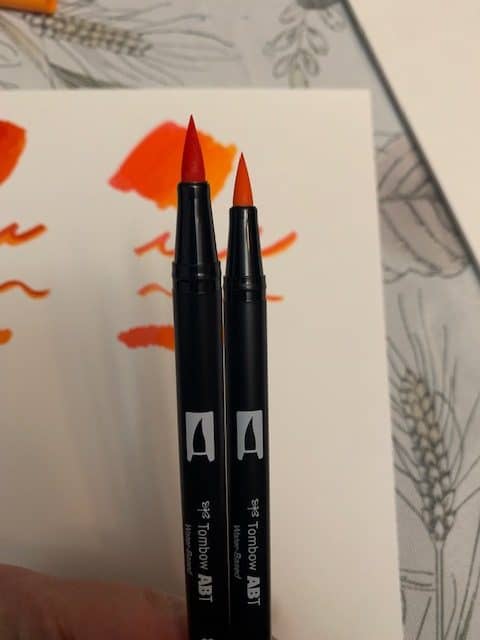
Many people say they’ve used the same set of Tombow markers for years without running out of ink. With heavy use, they would wear out more quickly. Once Tombow markers are out of ink, or the nib is frayed and worn out, they just need to be replaced. They cannot be refilled with ink, and the nibs can’t be replaced like with alcohol markers.
